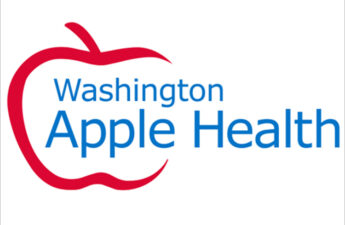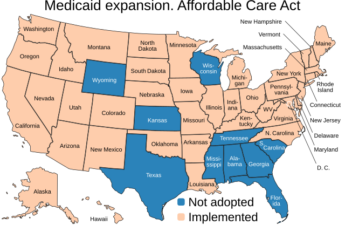
By JoNel Allecia, Kaiser Health News and Barbara Feder Ostrov, Kaiser Health News and Donna Gordon Blankinship
When a long, black bus bearing the logo of drugmaker AbbVie rolls through Washington state next year, it will promote a new effort to eradicate hepatitis C infections.
The state is paying for the marketing campaign as part of a deal to give AbbVie the exclusive right to treat its citizens who have the potentially deadly liver disease. Armed with its medication, Mavyret, AbbVie beat out rivals Merck and Gilead Sciences in a blind bidding process.
It’s the second time this year that a state has struck a novel deal with a pharmaceutical company to obtain drugs that can cure hepatitis C ― with discounts from a price that came to market at $84,000 for a course of treatment.
The drugmakers are in a race to treat the 2.4 million people in the U.S. with the viral infection. Left untreated, its most chronic form can cause liver damage, including cirrhosis, as well as liver cancer and death.
States are weighing the price of curing those infected with hep C using the new drugs against the medical and economic costs of long-term care for those with untreated infections.
The state bears the medical expenses of the Medicaid and prison populations as well as public employees and retirees.
The money paid to AbbVie buys a package of services that includes outreach and testing to identify patients as well as the drugs to treat them. But the price and other details of the deal are secret under the Washington state Public Records Act, even though they involve massive commitment of taxpayer dollars.
Washington officials said they’re prohibited from releasing details by federal rules that hide drug pricing to protect what companies consider trade secrets.
Lawyers for the three pharmaceutical firms that submitted bids vowed to go to court to halt the release of bid documents requested by Kaiser Health News under state public records laws.
Without transparency about the details, however, it is impossible to evaluate whether the spending amounts to smart public policy or a boondoggle that primarily benefits manufacturers hoping to lock down payments of perhaps $10,000 per patient for drugs from Medicaid. The same drugs from the same manufacturers can cost less than $100 per course of treatment in other parts of the world.
The secrecy troubles Dr. John Scott, medical director of the University of Washington’s Hepatitis and Liver Clinic at Harborview Medical Center in Seattle, which treats most of the 65,000 hepatitis C patients in the state ― even as he welcomes the curative drugs and wider access to treatment.
“I absolutely support greater transparency,” Scott said. “I think the public needs to know how much these things cost.”
Many people don’t realize that such obscurity is “baked into the system,” said Pam Curtis, director of the Center for Evidence-Based Policy at Oregon Health & Science University.
“That definitely hamstrings our ability to weigh the facts in front of us,” she said. “You want policy to be driven by the highest-quality evidence.”
Other states are eyeing the experiments “with a healthy skepticism but a high level of interest,” said Jennifer Reck, project director for the National Academy for State Health Policy.
In Washington, officials would describe the terms of the AbbVie contract only in the broadest terms. After federal rebates, the state spent about $80.4 million in 2018 on the drugs, known as direct-acting antivirals, to treat more than 3,300 patients, figures show.
Under the new contract, officials expect to spend about the same amount of money per year, while treating twice as many patients, said Dr. Judy Zerzan, chief medical officer for the Washington State Health Care Authority.
That works out to more than $321 million to treat about 30,000 patients over four years, with options for two-year extensions.
But that would be an improvement over the nearly $387 million state officials have spent since 2014 to treat just 10,377 people, according to state records. That works out to an average cost of $37,259 apiece, though actual fees vary by program.
Washington’s request for proposals included a provision that other states could join its program in the future ― also a potential benefit to AbbVie.
“There’s probably an alignment of interests all the way around here,” said Alan Carr, a senior analyst focusing on biotechnology with the Wall Street firm Needham & Co.
Another reason it’s a race for the drugmakers: The overall market for hepatitis C drugs has been “falling fast,” as more patients are treated and cured, Carr said.
“The companies are trying to find a way to ensure the remaining patients use their drug,” Carr said. “[They] have a lot less leverage than they once had, and that’s why they’re willing to do these deals.”
Many patients with hepatitis C have no symptoms and are silent carriers. Only a fraction of people with the virus will develop the serious consequence of the disease, liver failure or cancer. Still, most public health experts urge screening ― and treatment.
The new contracts ― sometimes referred to as “the Netflix model” because they mimic that media-streaming service ― call for capped costs or flat-rate subscriptions for cheap access to the drugs.
But the plan is much broader than creating a drug discount for the state, said Michael Staff, AbbVie’s vice president of U.S. market access.
“Simply stating you want to eradicate hepatitis C without a very detailed plan is probably not going to be effective,” he said. AbbVie’s contract includes payments for services that include outreach, such as the bus, to identify infected patients.
In Washington, the arrangement would treat about half of those in the state infected with hepatitis C, but the average per-patient cost would be about 40% less than before the deal, Zerzan said.
In Louisiana, the first state to announce a flat-rate hepatitis C drug agreement, Asegua, a subsidiary of Gilead, will provide an unlimited amount of its drug, Epclusa, for a set price — roughly $58 million a year for five years, or up to $290 million.
Louisiana plans to treat about 31,000 of 39,000 Medicaid patients and prisoners believed to have the disease. Costs could drop to less than $10,000 per patient, according to the contract, which the state health agency made available after a public records request.
The flat-rate concept was put forward by Dr. Peter Bach, director of Memorial Sloan Kettering’s Center for Health Policy and Outcomes, and his colleagues. Australia implemented a similar arrangement in its national health plan. England’s National Health Service has one as well.
In Egypt, which has the highest hepatitis C rate in the world, negotiations and generic pricing have reduced costs to $84 for a course of treatment.
U.S. drugmakers likely wouldn’t have considered such a plan when they first introduced their medications. Gilead’s Sovaldi, the first antiviral for hepatitis C, launched at $84,000 for a course of treatment; the second, Harvoni, started at $94,500. Three years later, AbbVie introduced Mavyret at $26,400.
Now, Bach said, drugmakers are staring down a sharp decline of their once-hot market.
“They were losing market share and price per share,” Bach said. “If payers [like state Medicaid programs] can give them the same revenue with much more certainty, they’ll prefer that to uncertainty over what’s happening now.”
Hepatitis C poses dilemmas for public health officials and drugmakers alike.
Louisiana has been under pressure from the American Civil Liberties Union regarding prisoners who said they were denied effective hepatitis C treatment. And Washington state’s Department of Corrections faces at least one lawsuit from a prisoner who said he was denied timely care for his disease.
In Washington, Gov. Jay Inslee directed health officials last year to negotiate the best deal to eliminate hepatitis C in the state by 2030, which mirrors goals of global health agencies.
The federal Centers for Disease Control and Prevention warned last month that new hepatitis C infections are on the rise ― 44,300 in 2017, the seventh consecutive annual increase. New cases of hepatitis C have spiked among adults in their 20s and 30s, largely because of the opioid epidemic, according to the CDC.
Between 15% and 25% of people with acute hepatitis C will clear the infection on their own; the rest become chronically infected with the virus.
Hundreds of thousands of people have been treated ― and cured ― since the drugs were introduced early this decade. Deaths from hepatitis C fell from almost 20,000 in 2014 to a little more than 17,000 in 2017, which could be an effect of the new drugs.
“It’s just been transformational,” said Scott, of the University of Washington’s Hepatitis and Liver Clinic. Previous treatments for hepatitis C had to be taken for a year, had toxic side effects and helped only 40% of patients, he added.
The Center for Evidence-Based Policy has advised Washington state in the effort to eradicate hep C, Curtis said. She noted that the arrangements Washington and Louisiana struck share an overall goal of reining in runaway drug prices, especially in state-run Medicaid programs, which can’t shift costs like the commercial market and would be forced instead to cut services.
“States are already struggling,” Curtis said. “A larger and larger part of their budget is being eaten up by these new high-cost drugs.”
“This is not a solution,” she said, “but it’s a step in the right direction.”
Kaiser Health News (KHN) is a national health policy news service. It is an editorially independent program of the Henry J. Kaiser Family Foundation which is not affiliated with Kaiser Permanente.


